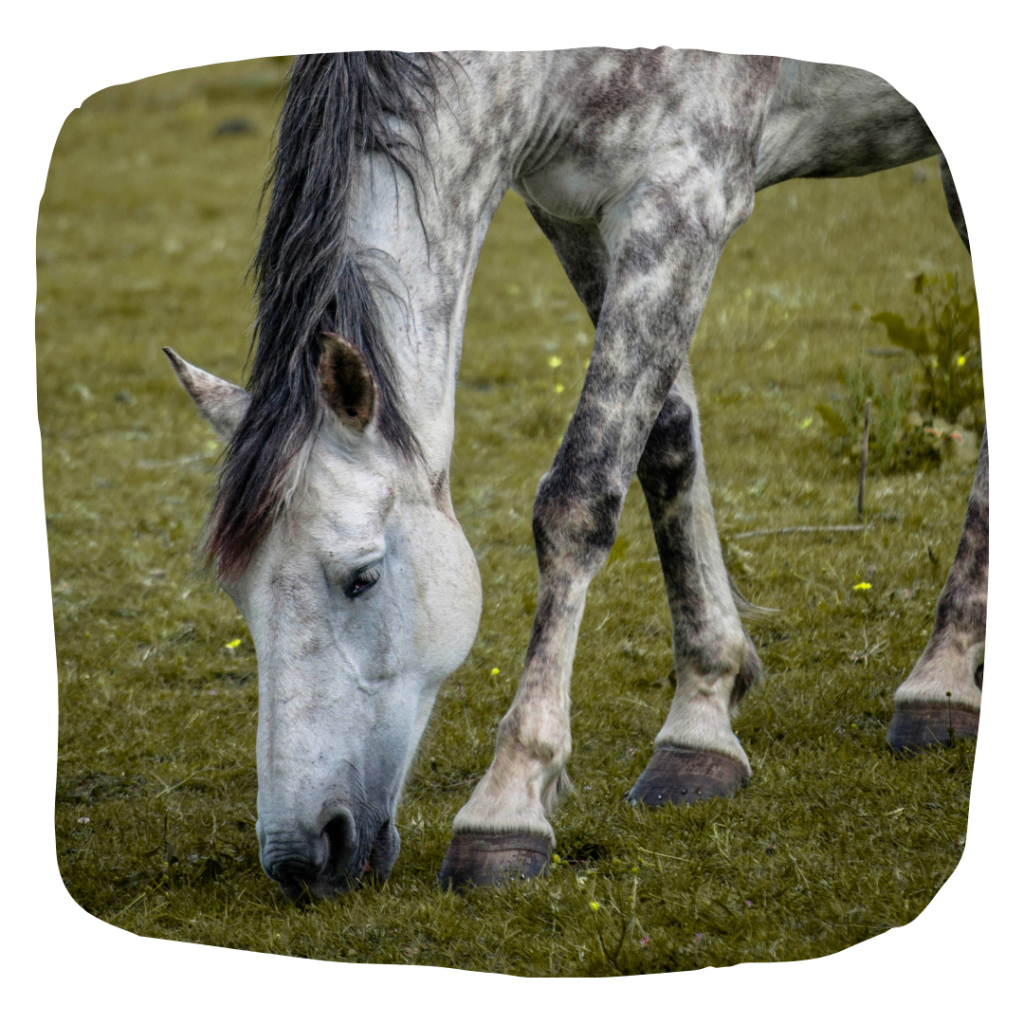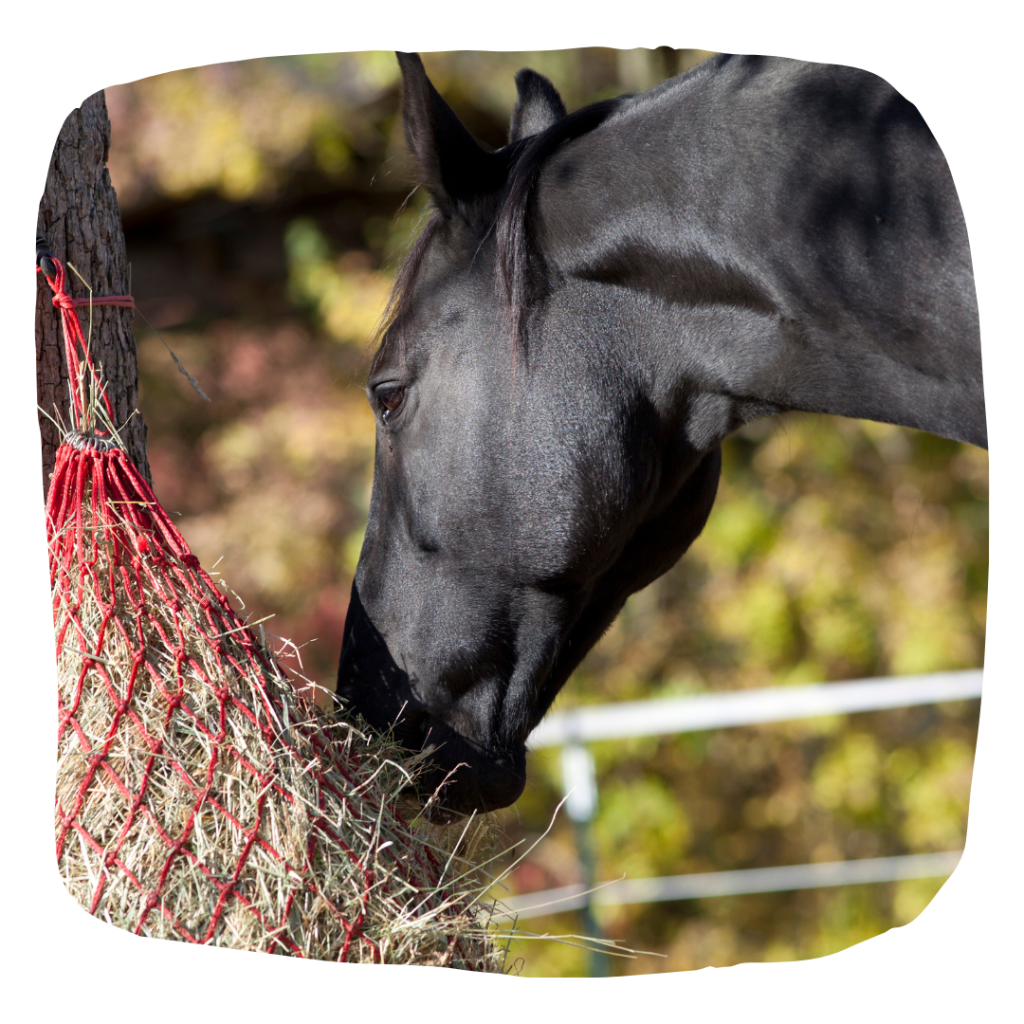Risk of Laminitis, What the Fructan?
With the changes in weather and rich spring grass, it's great to see the horses back out with the sun on their backs, especially after a wet and muddy winter. But for those horses at risk of laminitis, now is the time to consider the best management practices to help prevent symptoms from occurring.
Laminitis is the inflammation of the sensitive layers of laminae in the hoof. Laminae are the delicate structures attaching the hoof wall to the pedal bone. Inflammation in the hoof can be very painful for the horse and in severe cases the pedal bone may drop and/or rotate due to the strain on the laminae making them weaker and unable to support the pedal bone effectively.
Some horses may be at a higher risk of developing laminitis than others, for example those with metabolic disorders such as Cushing's Disease (PPID) and EMS (Equine Metabolic Syndrome) however ALL horses and ponies can be affected by laminitis.
During times of cold or drought the grass stores excess sugar which it has not been able to be utilise for growth, this sugar is stored as fructans, not to be confused with fructose.
Fructans are a type of fermentable sugar which is unable to be digested in the horse's stomach and absorbed in the small intestine. Fructans pass into the hind-gut where they cause the pH balance to drop, leading to disruption of the good micro-organisms and, resulting in increased production of lactic acid. Due to this knock on affect, toxins are released and the horse's natural inflammatory response kicks in, leading to an increased risk of laminitis and colic.

Conservative management is key to reducing the risk of laminitis. You can monitor and control your horse's routine to help reduce the factors which may lead to laminitis:

- Ensure horse's and ponies who may be at risk are receiving a low sugar and low starch diet.
- Monitor your horse's grazing, the type of grass, growth stage, weather conditions and how long your horse is turned out for can all have an impact.
- Ensure your horse is in an ideal level of work for their routine and diet, excess weight can increase the risk of laminitis.
- When your horse is not eating grass you can provide soaked hay to reduce the sugar intake from alternative feed sources. To effectively reduce the sugar content of hay it should be soaked for a minimum of 6 hours, you may also want to look at having your hay/haylage analysed to ensure it is low sugar.
- Horse's are trickle feeders, if your horse is turned out in a bare paddock, consider offering soaked hay in small holed nets. Spacing out the haynets will encourage your horse to move around. Your horse shouldn't go more than 4 hours without eating as this can lead to digestive upset and gastric issues.
- Consider feeding a supplement designed to support the factors associated with laminitis.
How can a supplement help horses and ponies at risk of laminitis?
Supplements can help to support different levels within the body, there are various reasons why a supplement may help a horse or pony who is prone to laminitis such as; ingredients targeting an anti-inflammatory response, supporting digestion and the gut friendly microbiota, supporting the metabolism in horses and ponies with underlying conditions such as EMS, and aiding circulation to help with blood flow and removing toxins.
Here are some of our recommended products to support your horse during times where the risk laminitis may be increased:
- Understanding Equine Gastric Discomfort: How to Spot It and Help Your Horse Feel BetterAs horse owners, we know how important it is to keep our horses healthy and happy. But have you ever considered the role of gastric comfort in your horse's well-being? Just like humans, horses can suffer from gastric discomfort, and it’s something that often gets overlooked. With the modern demands of exercise, travel, and stabling, gastric stress in horses is more common than you might think. Understanding it, spotting the signs, and making a few adjustments can go a long way in helping your horse feel their best.
- Do you know your carrons from your coppers?The Importance of Carron Oil and Copper in a Horse's Diet When it comes to looking after our horses, as owners and carers, we all know how vital it is to ensure they receive the right nutrients for their health and well-being. While the basics like hay, grass, and water often take centre stage, it’s […]
- How flexible are your joints?How flexible are your joints? Do you know the factors that play a part in equine joint health and support?











